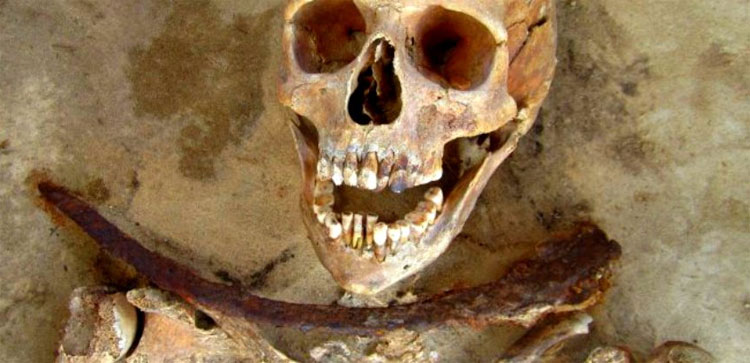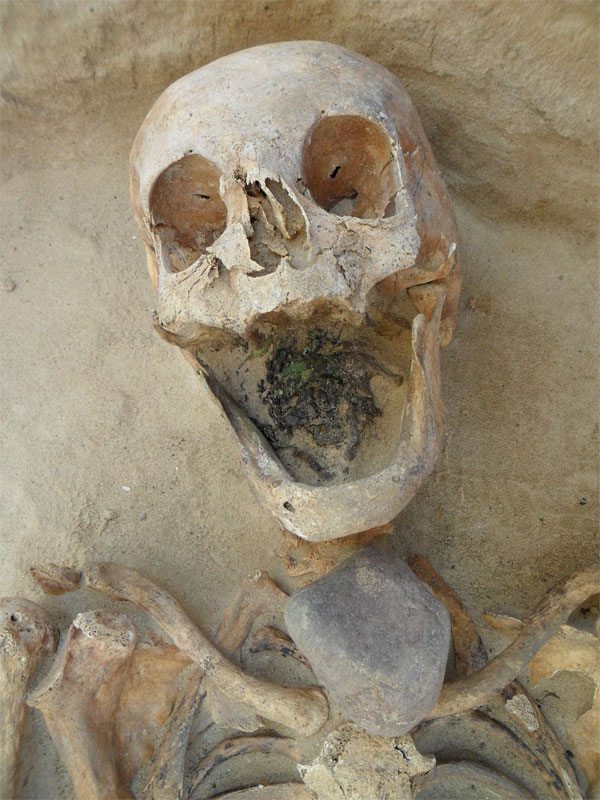Mysterious Polish vampire legend from the 17th century was first revealed
In the 17th and 18th centuries, the people of Northern Poland maintained a rather strange burial custom, like they wanted to prevent the dead from resurrecting.
In the history of the world, the concept of blood - sucking demons - or vampires or "vampire" has appeared in many cultures, especially with European culture.
And in Poland there is such a legend. According to archaeological evidence, in the 17th and 18th centuries, it seemed that residents in Poland had a very strange procedure to bury the dead . The body of the period was inserted with a large stone, or placed a scythe across the chest .

The ancients inserted a chest scythe .
This is a way to prevent the dead of the grave and turn into a vampire. However, from a scientific perspective, there are obviously no vampires. The problem is why the bodies during this period made people so frightened that they thought they were blood-sucking demons?
There have been many hypotheses about this strange burial. The most common of these is the number of vampires who are strangers from other places, making villagers suspicious and deciding to "handle".
However, until 2014, there have not been any studies done on this ritual, as well as the "vampire" bodies .
So experts from the University of Southern Alabama (USA) decided to stand out to do that. Specifically, the study examined six skeletons in a village in northern Poland. All six bones were buried in that strange rite, while around were hundreds of other ordinary parts.

Or place a large stone on the chest to prevent the dead body from rising to the grave.
Experts have measured the ratio of isotopes of strontium in the jaw bone, compared to normal human bones. Strontium is an element in rocks, but the proportions will vary depending on the origin. That means, by measuring strontium, we will know where the skeleton comes from, belonging to the same area or not.
And the results are surprising: all "vampire" bodies are not strangers, but people in the same village. And if so, their death and burial are even more mysterious.
Lesley Gregoricka - research director gave some hypotheses. They leaned in the direction that these people died of cholera - a dangerous epidemic in Eastern Europe in the 17th century. And according to the notion of the people of that time, people who died of illness would come back, making people living sick , like vampires.
"People at the time did not understand why the disease spread. Instead of scientific explanations, all of the unusually lethal diseases were attributed to supernatural phenomena - and in this case, vampire dragon " - Gregoricka said.
Although it is only a hypothesis, research has brought a different perspective on European culture in old society. In addition, this may be the beginning of explaining some of the old customs, such as the burning of witches that were very popular in Italy.
- The country once had the opportunity to erase Russia from the world map
- The legendary 'vampire' and the truth you certainly don't know
- The first film about species destined to be a vampire squirrel
- Smartphone suspect in the 17th century painting
- Serbian town rioting because of vampire warnings
- Found the 17th-century female corpse buried with her husband's heart
- Discovered the 3 crucified 'vampires' in Poland
- Vampires - from myth to science
- Vampire remains revealed in Poland
- Scary story about vampire castle in Transylvania
- Detecting wrecks from the 17th century
- Discover extremely sophisticated locking systems from the 17th century
 Discovered an ancient centipede fossil 99 million years old
Discovered an ancient centipede fossil 99 million years old Discovered bat-like dinosaurs in China
Discovered bat-like dinosaurs in China Discovered a 200-year-old bronze cannon of the coast
Discovered a 200-year-old bronze cannon of the coast Discover 305 million-year-old spider fossils
Discover 305 million-year-old spider fossils